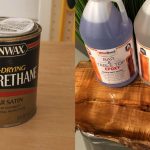Can You Use Rustoleum On Wood? Here Is What You Need To Know!
Rustoleum has long been trusted for its ability to protect and enhance metal surfaces. This product has been developed to protect surfaces from harsh weather conditions. Therefore, many DIY enthusiasts and craftspeople are curious about its compatibility with wood.
So, can you use Rustoleum on wood? Yes, you can. Using Rustoleum paint for woodworking projects can be an effective way to impart its protective properties to wooden furniture. However, because Rustoleum is an oil-based product, you must first prepare the wood surface by sanding and priming it. This ensures optimal adhesion of Rustoleum to the wooden surface.
This article will walk you through the application process step by step. We will also go over the advantages and disadvantages of using Rustoleum on wood.
Can You Use Rustoleum On Wood?
As previously stated, Rustoleum is best known for its ability to protect metal surfaces against corrosion and weathering. So, can Rustoleum handle wood? Yes, it can. Rustoleum can be used to improve, refurbish, or protect wooden surfaces with a few precautions.
For example, for Rustoleum to adhere effectively to wood, the wood surface must be meticulously prepared. This entails sanding the wood to eliminate any rough patches, residual finishes, or contaminants that might hinder proper adhesion.
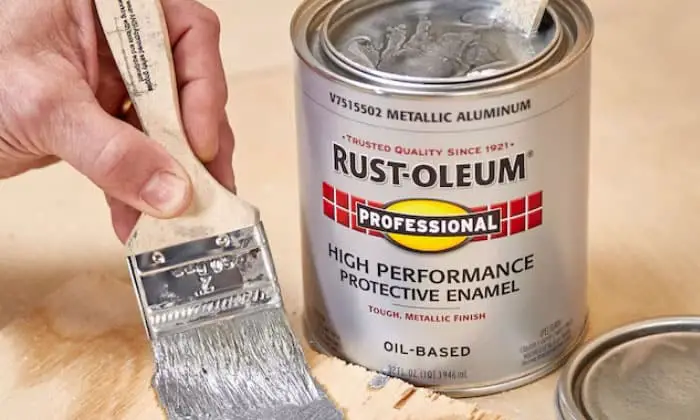
A smooth and clean surface ensures superior adhesion and a more uniform final finish.
Primer is also an ally. A good wood primer acts as a bridge between the wood and the Rustoleum coating. It improves adhesion, promotes a more uniform finish, and ensures the paint adheres securely. Also, primer is very important when working with high-tannin woods. This is to avoid tannin bleed-through.
In addition, environmental conditions can significantly impact the performance of Rustoleum on wood. Aim for a temperature of around 50°F (10°C) to 90°F (32°C) for optimal drying. The humidity levels should be below 85%.
How Do You Apply Rustoleum On Wood?
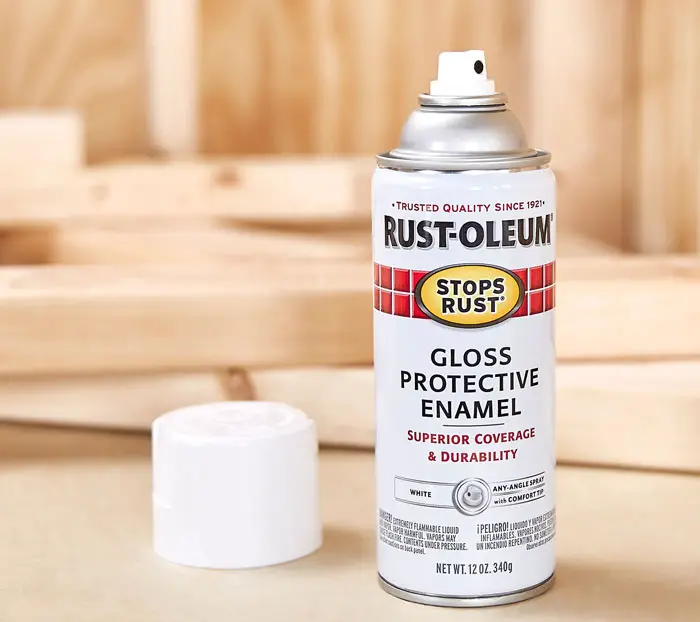
Follow these step-by-step instructions to achieve a professional finish that protects and enhances the aesthetic appeal of your wooden surfaces.
1. Gather Your Supplies
You will need:
- Rustoleum paint
- A high-quality wood primer that complements your Rustoleum product
- Sandpaper with various grits
- Painter’s tape
- Drop cloths or plastic sheets
- Painting tools such as brushes, rollers, or spray equipment
- Safety gear, for example, gloves, safety goggles, and a mask
2. Prep Your Workstation
Protect your work area from paint splatters and drips by covering it with drop cloths or plastic sheets. Also, use painter’s tape to mask off areas you don’t want to paint, such as edges or adjacent surfaces. Apply the tape carefully to create clean lines.
3. Prepare the Wood Surface
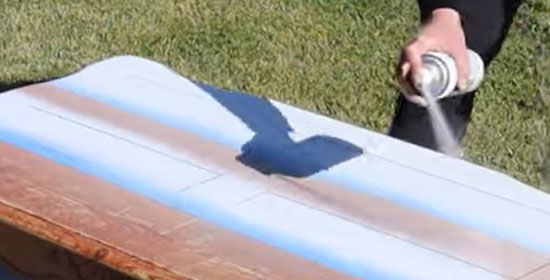
Properly preparing the wood surface is crucial to ensure the paint adheres well.
- Sanding: Start by sanding the wood surface using 180–220 grit sandpaper to remove any imperfections, old finishes, or rough spots. Work systematically and evenly over the entire surface. As you progress, switch to finer grits until the surface is smooth to the touch.
- Cleaning: After sanding, clean the wood surface thoroughly to remove dust and debris. A tack cloth or a damp, lint-free cloth is useful for this purpose.
- Apply Wood Primer: Apply a high-quality wood primer evenly over the entire surface. The primer acts as a bridge between the wood and Rustoleum. Allow the primer to dry; this takes 2-3 hours.
4. Apply Rustoleum
Now that your wood surface is prepped, it’s time to apply Rustoleum:
- Stir the Paint: Before you start, thoroughly stir the Rustoleum paint or coating to ensure an even consistency.
- Application: Using your chosen painting tool, apply a thin, even coat of Rustoleum to the wood surface. Work in smooth, overlapping strokes to achieve uniform coverage.
- Drying Time: Allow the first coat to dry completely.
- Additional Coats: Depending on your project and the desired finish, you may need to apply additional coats. Typically, two to three coats are recommended for optimal coverage and durability. Allow each coat to dry before applying the next.
Benefits Of Rustoleum On Wood
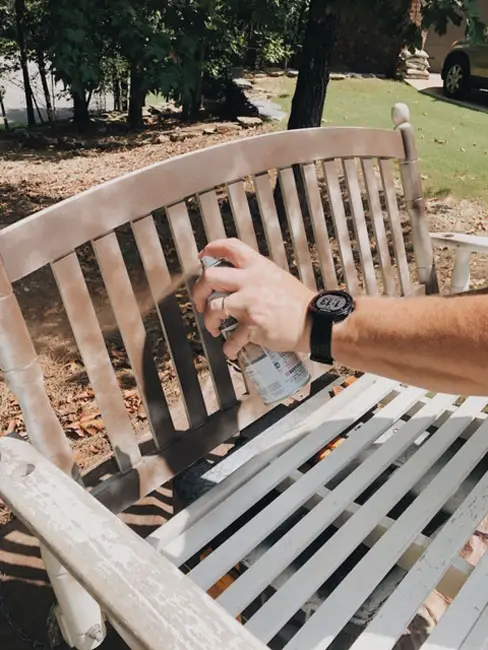
The key benefits of applying Rustoleum on wood include:
Enhanced Durability
- Weather Resistance: Rustoleum coatings are designed to withstand the harshest weather conditions. They protect wood from moisture, preventing it from swelling or warping due to exposure to rain, snow, or humidity.
- UV Protection: Rustoleum products also safeguard wood against the damaging effects of prolonged sun exposure. This UV protection helps prevent fading, cracking, and discoloration.
- Wear and Tear: Wooden surfaces coated with Rustoleum are more resistant to everyday wear and tear. This is particularly beneficial for high-traffic areas and items such as outdoor furniture and decks.
Versatility
Whether you’re working on indoor furniture, outdoor decks, or even wooden floors, you can find Rustoleum coatings tailored to your specific needs. Rustoleum also provides an extensive palette of colors and finishes. This allows you to customize the look of your wood projects.
Easy Maintenance
Wood surfaces coated with Rustoleum are generally easier to clean and maintain compared to untreated wood. Routine cleaning involves basic wiping or washing to remove dirt, dust, and grime. If the coating sustains minor damage or wear over time, Rustoleum allows for straightforward touch-ups.
Limitations Of Rustoleum
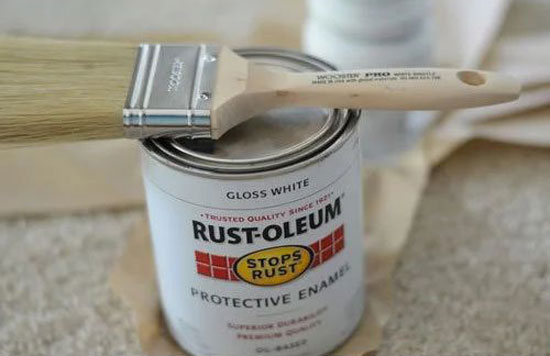
There are two critical limitations associated with Rustoleum. These are:
Cost Considerations
Rustoleum products are more expensive than standard wood paints or coatings. This cost factor can be a limitation for individuals working within budget constraints or on large-scale projects.
High VOC Content
Many Rustoleum products have a high content of Volatile Organic Compounds (VOCs). These are chemicals that can vaporize into the air, contributing to indoor air pollution. This can be a significant concern, especially when considering the use of Rustoleum on children’s toys or in homes with limited ventilation.
FAQs
Here are some related questions about Rustoleum coatings and their application on wood.
Q1. Can you use Rustoleum on stained wood?
Yes, you can. However, stained wood surfaces often have a protective topcoat or finish that needs to be addressed before applying Rustoleum. Therefore, use sandpaper to gently roughen the stained wood’s surface.
This helps create a texture that allows the Rustoleum coating to adhere better. Afterward, follow the steps discussed in the article.
Q2. How long does Rustoleum take to dry on wood?
The drying time for Rustoleum on wood can vary depending on the product and environmental conditions. Typically, it takes 2-4 hours to dry to the touch, but complete curing may take up to 48 hours.
Q3. Is Rustoleum waterproof?
The frequency with which Rust-Oleum finishes must be reapplied varies depending on the product and the environmental conditions. To ensure optimal appearance retention, reapply every 3-4 months. However, for specific instructions, please consult the product’s instructions.
Conclusion
While rustoleum is primarily known for its prowess on metal surfaces, it can indeed be used on wood when the right conditions are met. Proper surface preparation is essential for a successful application. By following the steps outlined in this guide, you can confidently use Rustoleum on wood.
Remember that periodic maintenance is key to ensuring your Rust-Oleum-coated wood projects stand the test of time. This preserves their beauty and functionality for years to come.



